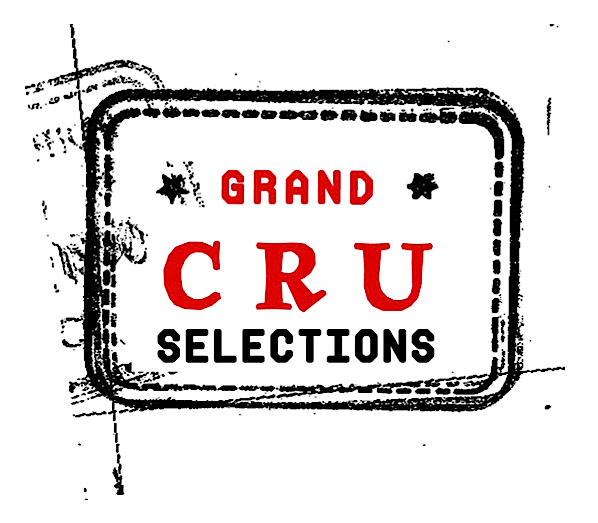IOppa
Romagnano Sesia, Ghemme, Italy
The Ghemme DOCG, one of the beaconing denominations of Alto Piemonte, lies in the shadow of Monte Rosa at the upper reaches of the Sesia river. Cool and well ventilated, this is the land of Nebbiolo, though a notably different, medium-weight version compared to Barolo or Barbaresco. Here, the Ioppa family has been producing wines for generations (as far back as 1852!). The new generation has their sights set on the past glories of traditionally crafted wines from this region, rebounding from a decade of experimentation with small oak and strong extraction. Their secret lies in the vineyard, with extreme attention payed to pruning and then thinning the vines providing less quantity but an undeniable quality of grapes and a longevity in the wines par none. Local hero Cristiano Garella began consulting as an enologist in 2015 and has made strides with the family to solidify Ioppa as one of the region’s leading players.
-
As with most of Europe, Northern Piedmont took its time recovering from a troubled century of rotten luck. First, phylloxera and vine diseases hit in the mid-to-late 1800s, then a historical hailstorm destroyed crops in 1904, followed by the havoc wreaked by back-to-back World Wars that devastated the willpower of this ancient wine community. People either emigrated away from Italy altogether or moved to the industrial centers of the country like Milan and Turin. While most of Alto Piemonte was overtaken by forests and grazing sheep, a few families resisted. Among those, were the Ioppa’s who farm some of the most prized vineyard parcels in the Ghemme DOCG. To this day, Ioppa remains a family affair: Giorgio Ioppa bears the flag from the family’s sixth generation and carries on the legacy with his sons, Andrea and Luca and his nephew, Marco.
-
The soils are composed of granite, quartz, and iron left behind from the retreat of the Mount Rosa glacier at the end of the last Ice Age. Further erosion of the Alps and the granite infused sands were moved by the Sesia river. Ghemme is mostly composed of alluvial soils but has one large plateau above the river where the soils are more firm and are a mix of hard clay and mineral rocks of iron and quartz.
-
Ioppa has taken to “the old way” of doing things in the vineyards, where they have done away with the use of herbicides, pesticides and chemical treatments and are now converting to organic farming. No easy feat in this region where high rainfall causes mildew to be prevalent, particularly considering the expanse of Ioppa’s 27 hectares of vines. In addition to Nebbiolo, Ioppa also farms local varietals Vespolina and Uva Rara, both used to soften the aggressive tannins and austere acidity that can partake to fickle Northern Piedmont Nebbiolo. Both are soft, slightly green, low-acid and low-tannin varieties. Thanks in part to the influence of consulting enologist Cristiano Garella since 2015, the Ioppa’s take pruning very seriously and prefer lower yields in the vineyards.
-
Stylistically the estate has turned away from experimenting with aging in smaller barrels and have returned to more traditional local methods of vinification using softer extractions and long aging in large wooden botti. The Ioppa cellar is located five meters below ground and holds seven 36-hL Slavonian wood cone vats and five 30-hL botti where the majority of the wines are aged. There is also about 20 barrique for aging vino passito.
Wines
SAN GRATO VINO BIANCO
Ioppa's sole white wine is a blend of Erbaluce and Timorasso. It is fermented entirely in stainless steel and doesn't see any oak in order the preserve the purity and minerality that Piedmontese white varieties are known for.
NEBBIOLO RUSIN COLLINE NOVARESI (ROSATO)
Ioppa's rosé comes from young-vine Nebbiolo. In the cellar, the vinification is straightforward - it is crushed, drained and quickly pressed. Fermentation is done in stainless steel tanks. 'Rusin' is their great grandfather's name in Piemontese dialect.
NEBBIOLO COLLINE NOVARESI
100% Nebbiolo from Romagnano Sesia, this is Nebbiolo to enjoy early and often. It ferments with natural yeast in stainless steel and macerates for 7 to 10 days before being aged entirely in stainless steel.
VESPOLINA CODA ROSSA
Vespolina is often used as a blending grape to soften Nebbiolo so we were really excited to see that Ioppa is proud enough of their fruit to bottle it on its own. It's a great contrast to their Nebbiolo Colline Novaresi as it's fermented and aged similarly. It ferments with natural yeast in stainless steel and macerates for 7 to 10 days before being aged entirely in stainless steel.
GHEMME
This wine comes from 2.2 hectares of vineyards in the Ghemme DOCG located in the villages of Ghemme and Romagnano Sesia. The soils are a soft alluvial mix left by the retreat of the Mount Rosa glacier after the last Ice Age and erosion of the Alps by the Sesia river. They are mostly sand, granite and clay based with a high content of iron, granite and quartz. The blend is approximately 85% Nebbiolo and 15% Vespolina. It ferments with natural yeast in stainless steel and macerates for 18 to 20 days before aging for 48 months in large Slavonian oak casks (25-30 hectoliter) and in bottle for a least two years before being released.

